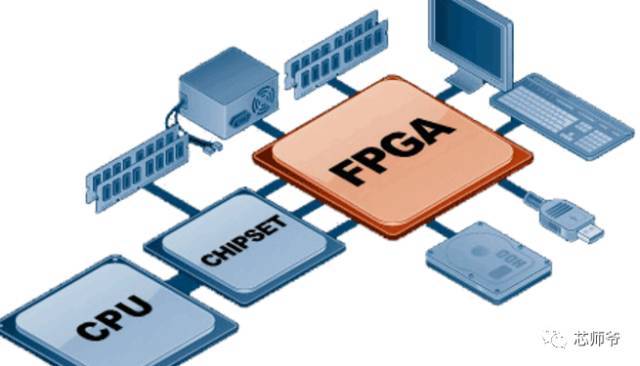FPGA is the abbreviation of Field Programmable Gate Array. The field of application of FPGA is initially the communication field. However, with the development of the information industry and microelectronics technology, programmable logic embedded system design technology has become the most popular technology in the information industry. First, the application range covers a wide range of hot areas such as aerospace, medical, communications, network communications, security, broadcasting, automotive electronics, industrial, consumer markets, measurement and testing. With the advancement of technology and the development of technology, we have expanded to more and more extensive application areas. More and more designs have begun to shift from ASIC to FPGA. FPGA is entering every corner of our daily life in the form of various electronic products.

Every year, the gap in the demand for FPGA design talent in China is huge, and the salary for FPGA design talent is also the highest in the industry. At present, there are more than 400,000 FPGA talents in the United States and 70,000 in Taiwan and only 10,000 in mainland China. It can be seen that China is eager to have more FPGA talents emerging.
The core advantages of FPGAThe core advantages of FPGAs are: high program flexibility, short development cycles, and high flexibility in parallel computing. Unlike ASIC's full-custom circuit, FPGAs are semi-custom circuits. In theory, if the gate size provided by the FPGA is large enough, the logic functions of any ASIC and DSP can be programmed. In addition, programming can be repeated, unlike ASIC design can not be modified after curing. Therefore, FPGAs are also more flexible. In practice, the FPGA's on-site reprogrammability allows developers to modify the chip by running the program on-chip with a software upgrade package instead of replacing and designing the chip (design and) time-costly, even if the FPGA can be remotely accessed over the Internet. upgrade.
Short development cycle. The ASIC manufacturing process includes multiple steps such as logic implementation, wiring processing, and tapeout, while the FPGA eliminates the need for wiring, masking, and custom tapeout, and the chip development process is simplified. Traditional ASIC and SoC design cycles average from 14 months to 24 months, and FPGA development time can be reduced by an average of 55%. Xilinx, the world's largest FPGA vendor, believes that faster is more important than cheaper. The product will be 33% less profitable in the five months of the city's six-month period, and equal to 14% of the lost market share every night.

(The design flow of FPGAs is much smaller than that of ASICs.)
Parallel computing is highly efficient. FPGA is a parallel computing algorithm that can execute multiple instructions at a time. Traditional ASIC, DSP and even CPU are all serial computing. Only one instruction set can be processed at a time. If ASIC and CPU need to be accelerated, more methods are to increase the frequency. Therefore, the frequency of ASICs and CPUs is generally higher. Although the general frequency of the FPGA is lower, but for some special tasks, a large number of relatively low-speed parallel units are more efficient than a few high-efficiency units. In addition, from a certain point of view, in fact, there is no so-called "calculation" within the FPGA, and the end result is almost similar to the ASIC "circuit direct", so the efficiency of execution is greatly improved.
How to learn FPGA?FPGA is so important to us, so for beginners, how to learn FPGA? It is better to have a suitable instructor to learn a technology. This makes it easier to master FPGA technology. What a pity is that most schools do not have related courses or teachers with practical experience. How can we find a shortcut to help? How quickly can beginners learn such competitive technologies?
(1) Master the FPGA programming languageBefore learning a technology, we often start from its programming language. There are two kinds of programming languages ​​for learning FPGA: VHDL and Verilog. Both languages ​​are suitable for programming in FPGA. VHDL is widely used in Europe, and Verilog It is widely used in China, the United States, Japan, and Taiwan. It is recommended that you learn Verilog because it is very easy to learn and is very similar to C language. If you have a C language foundation, you can quickly master Verilog in a small amount of time. , and VHDL is more abstract, learning longer.
(2) FPGA experiments are particularly importantIn addition to learning programming languages, the more important thing is to practice and design your own programs to run in a real FPGA. At this time, we need to choose a board for experiments. The general red hurricane board can basically meet everyone's needs. We may be interested to buy a piece to do experiments.
(3) FPGA training can not be ignoredUnder conditions, the participation in the FPGA training can greatly improve their level in a short time, because there are many detours can be saved with a teacher. The author found on the Internet Professor Xia Yuwen, one of the founders of the first university EDA lab, and an unnamed Core Rui engaged in an FPGA training class. Interested friends can go and see that there are many video resources on the Internet. Take a look down.
I think as long as everyone wants to learn FPGAs and want to work in FPGAs, there will always be ways to find the right one.
Battery Management And Control Systems
Shenzhen Sunbeam New Energy Co., Ltd , https://www.sunbeambattery.com